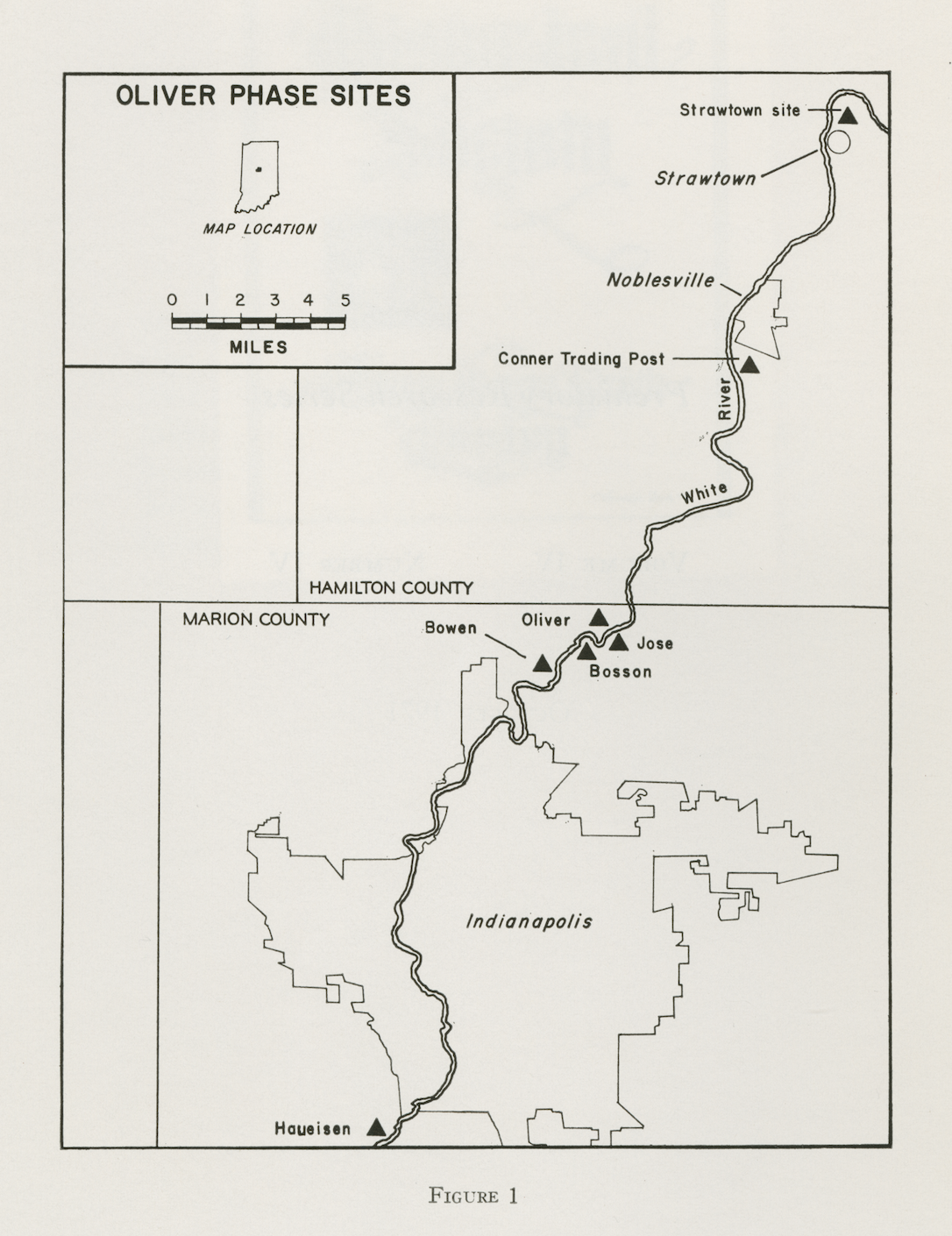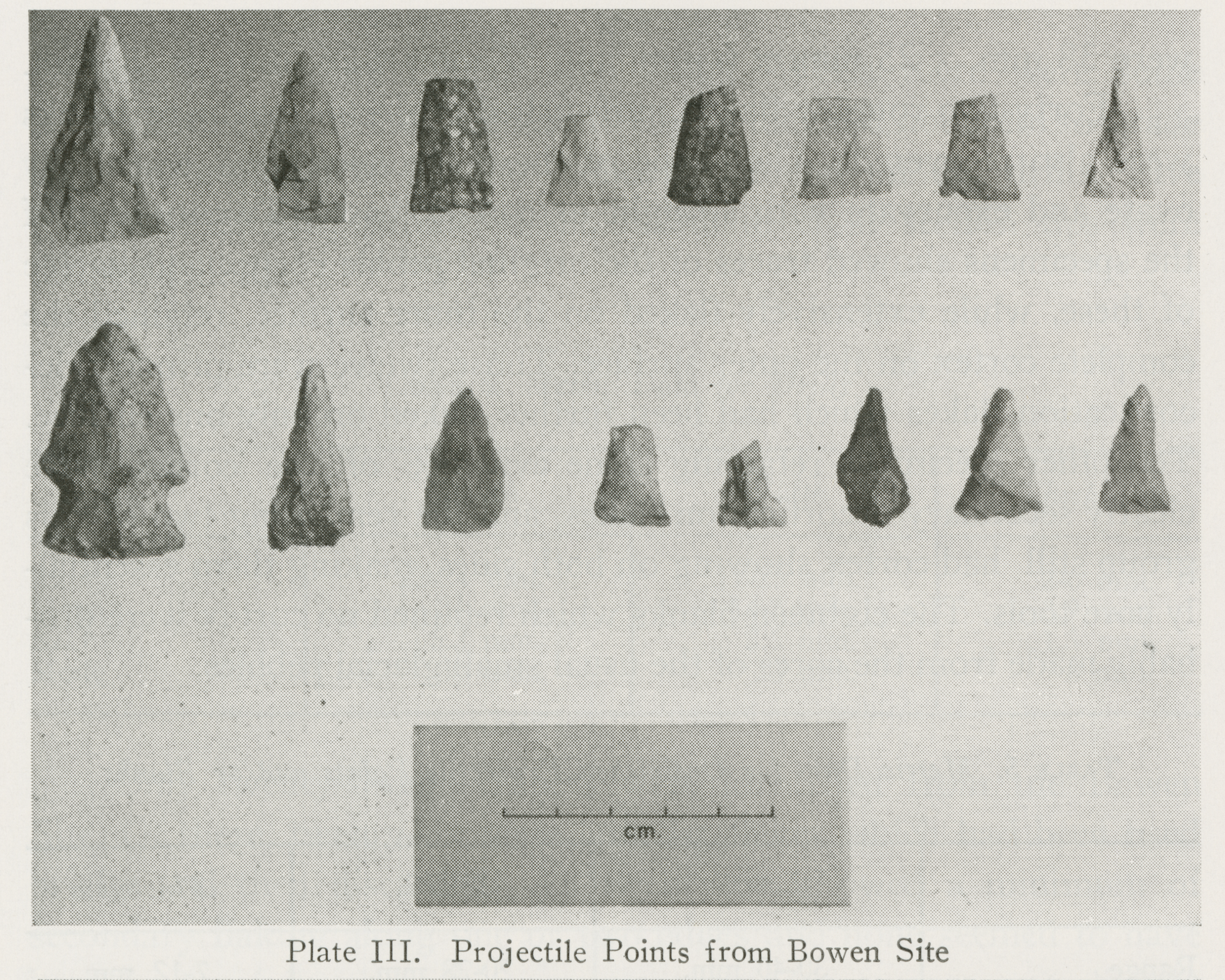The Bowen Site is the best documented of seven known Late Woodland Native American villages along the in .

The Oliver Phase was a cultural mixture between Late Woodland (Fort Ancient) and the Upper Mississippian influences between 800 and 1300 A.D. Upper Mississippians were indigenous people who lived primarily in the upper basin of the Mississippi River, while Fort Ancient or Late Woodland Native Americans lived primarily in the region of the Ohio River Valley. The two cultures coexisted during this time period. Pottery styles indicate a greater Fort Ancient influence. The site was located on a glacial outwash terrace just north of White River and east of Keystone Avenue.
Following a salvage excavation from 1959 to 1965 by Indiana University, the site area was mined for gravel. The 0.78-acre excavation delineated a 200-foot diameter village and burial area, which included 120 features such as fire and refuse pits. No evidence of permanent habitation was found.
Artifacts included pottery sherds, chipped stone, ground stone and bone, large amounts of unworked bone, and waste piles of mussel shells. Tools recovered on-site included projectile points, hammers, axes, grinding stones, antlers, and other bones. The lack of permanent structures and the food-type distribution indicate that the Bowen Site was a transient, warmer weather habitation.

The animal bone debris and the number of burials suggest a transient population of about 100 people over one generation. Thirty-nine of 42 burials were studied. The oldest burial was 70 years of age, the youngest 7 months. No male burials between ages 14 and 23 were found, while 5 female burials between ages 17 and 20 were found. This distribution of remains suggests young male death and burial away from the village, probably due to accidents and warfare, while young female deaths were likely due to first-time childbirth trauma.

Help improve this entry
Contribute information, offer corrections, suggest images.
You can also recommend new entries related to this topic.

